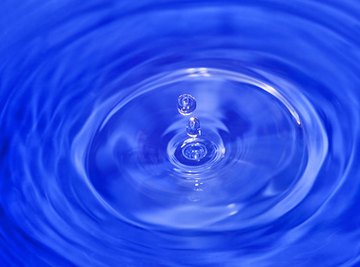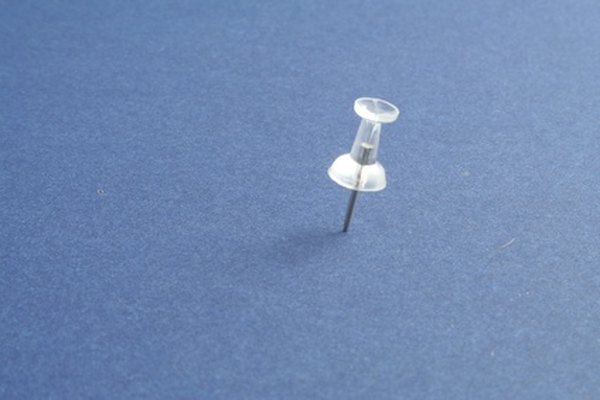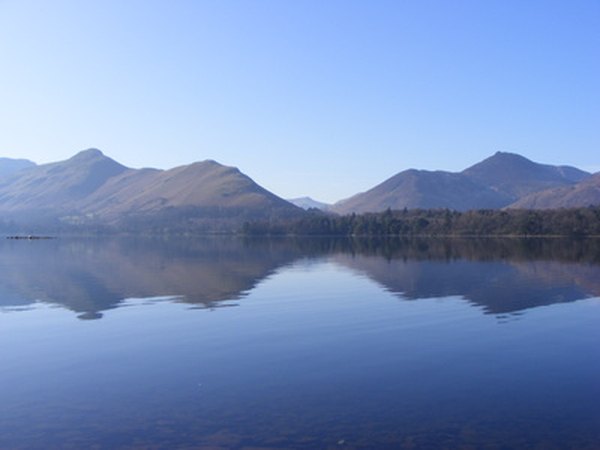
A water table map represents the surface of an unconfined aquifer as represented by elevation contours. This map uses a minimum of three groundwater level measurements from wells or surface water proximal to each other, according to the United States Environmental Protection Agency. Measured water levels converted to elevations become the basis for contours of equal elevation. A resulting water table map shows the plane of the unconfined water below ground within the triangle of space defined by the three measurement points.
Things You'll Need
- Three water elevations
- Scaled map
- Scaled ruler
- Calculator
Map Setup
Write the value of each water elevation next to the respective measurement location, typically at a well, on the scaled map.
Draw the first line between the highest and lowest elevation points.
Identify convenient round-number values between the high and low points through which you will draw the contours. The values should be numbers that represent a consistent interval, such as every 0.5 feet. The interval becomes the water elevation contour interval for the map.
Interpolation and Contouring
Water elevations may be either relative or measured from mean sea level, as long as the values use a common surveyed datum.
You may use water table maps to assess the direction of groundwater flow and movement of contaminant plumes.
Water table maps using more than three points can be extended with the same technique by creating more abutting triangular areas with any three points.
Drawing a water table map is more difficult if elevation points lie along a line. The easiest water table map stems from three points that lie in a triangle.
Due to the number of assumptions that can affect the creation of accurate water table maps, consult a professional hydrogeologist or geologist for an appropriate interpretation of the data that may affect decisions about planning, water usage, or cleanup of contamination.
The further apart elevation points lie, the higher the uncertainty in the accuracy of the contoured map and the higher uncertainty in using the map to make business or resource decisions.

Interpolate where contours will cross the first line by estimating the position and spacing of contours between the endpoints. Mark ticks along the first line for the selected contour values (every 0.5 feet, for example) so that they occur proportionally spaced with respect to the values of the two endpoints of the line, according to the Wisconsin Department of Natural Resources. For example, you would place the interpolated mark for the point of 27.5 feet much closer to an endpoint of 27.7 feet than an endpoint of 25.8 feet.
Place the remaining ticks proportionally. In this example, you would place them at 27.0, 26.5 and 26.0 feet. Either estimate the proportional spacing or use a calculator to determine the exact placement, depending upon your need for accuracy.
Draw a third line between the points that represent the middle and lowest elevations. Mark ticks along the third line for the selected contour interval so that they occur proportionally spaced with respect to the values of the two endpoints of the third line. Any connected ticks of equal value create an elevation contour.
Select one of the ticks on the first line and draw a connecting line to the tick of the same value on another line. The connecting line, or elevation contour, will not extend past the triangle created by the first three lines.

Continue to select other ticks on the first line and draw connecting parallel contour lines through the ticks of equal value. None of the contour lines will cross each other. The contour lines represent lines of equal elevation.
Tips
Warnings
References
Resources
About the Author
Based in London and Salt Lake City, Janet Roemmel has been writing science material since 1989. She wrote and edited numerous articles and papers for geologic publications and clients. Roemmel received geology degrees as a Bachelor of Science from Purdue University and Master of Science from the University of Montana.
Photo Credits
water drop is falling down and impact with water surface image by Alexander Potapov from Fotolia.com
